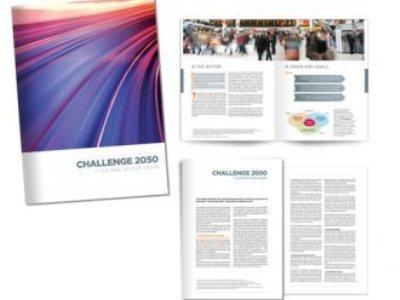
EUROPE: A high-level vision of the future shape of rail transport was officially launched at the European Rail Awards in Brussels on February 26, hosted by CER and UNIFE.
Entitled ‘Challenge 2050’, the pan-sector study outlines the rail sector’s ‘shared perception’ of what Europe’s railways could look like in the future. It is intended to ‘orient and guide’ policy-makers, other stakeholders and companies across the railway operating community and supply sector, encouraging them ‘to enable the innovation and investment on which sustainable mobility in Europe depends’.
Challenge 2050 has been drawn up by a UIC-led working group in co-operation with CER, EIM and UNIFE, along with input and support from UITP, the European Rail Research Advisory Council, the European Passengers’ Federation, the European Rail Freight Association, the European Freight & Logistics Leaders Forum, the European Passenger Train & Traction Operating Lessors’ Association, the European Shippers’ Council and the International Union of Private Wagon Owners.
The vision takes account of the European Commission’s 2011 White Paper on Transport, and recognises the research and development activities included in the Shift²Rail initiative. It is expected to provide a focus to shape ideas for future innovation through the EU’s ‘Horizon 2020’ Framework Programme, either as direct projects or via ERRAC’s RailRoute 2050 research roadmap and the FOSTERRAIL project.
Challenge 2050 identifies a range of high-level goals for a ‘business-led’ rail sector, embracing:
- value for money;
- performance;
- safety & security;
- consistency;
- capacity
- connectivity;
- sustainable development;
- people.
These are each addressed in terms of policy, technology and services, examining what needs to be done in the policy arena, the technical elements to be developed and services as seen by the end customers. The whole document is underpinned by a section emphasising the importance of securing investment and the need for sector leadership ‘to act determinedly and collaboratively across functional and territorial boundaries’.
A supporting document describes many of the demographic and societal drivers that have helped to shape the long-term strategy, and the iterative process of aligning the vision with the goals to ensure successful delivery.

















